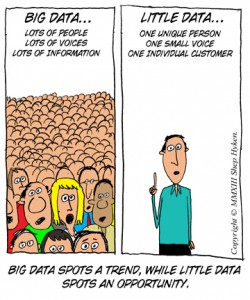In thinking about strong companies that are using emerging media to their full potential, several come to mind, but Amazon always tops the list. Amazon relies on interactive opportunities to not only build awareness, but also create relationships and expand loyalty. Why are they so successful? Why do they succeed when others don’t? Why can’t regular brick and mortar companies have such an impact?
Gary Shapiro, leader of the International Consumer Electronics Association, writes in his book, Ninja Innovation:
“Jeff [Bezos] is one of those all-too-rare CEOs who focus on knowing the customers they have and the new ones they want to gain. In fact, according to Jeff, Amazon’s explosive growth beyond books seems to have been triggered by its early customers: “We actually started to get e-mails from customers saying, ‘Would you consider selling music, because I’d really like to buy music this way, and DVDs and electronics?’”
To be able to “know” their customers, CEOs must understand that we are in an era where the Internet connects all things and people. There is data around every interaction, every discussion, and every experience. There is so much information being generated, that it is known by the overwhelming and largely misunderstood term “Big Data”. In Robert Scoble and Shel Israel’s book, Age of Context, they clarify:
“It’s not the big data mountain that matters so much to people, it’s those tiny little spoonfuls we extract whenever we search, chat, listen, view, buy- or do anything else online. The hugeness can intimidate, but the little pieces make us smarter and enable us to keep up with, and make sense of, and accelerating world. We call this the miracle of little data.”
Intimacy is the key to understanding a customer. Thinking about data aggregation in personal terms will help companies mirror Amazon success. In the book Code Halos, the authors propose that all people and products have “Code Halos” or data surrounding them, and “Only when your tastes, your Code Halo of interests, connect with the institutional Code Halo of a Pandora, Amazon, or Apple, does the value of Code Halos become readily apparent.” In other words, companies need to find correlations within the data to create “moments of magic.”
A recent survey by IBM indicates that top leaders are starting to recognize the power of little data.
“By leveraging individual behavior and context, marketers are delivering personalized messages in real time by channel. The highest percentage of leading marketers, 85 percent, are delivering these personalized messages through customer service and call centers, as well as through their respective websites. This strategy is also leading to automated decision processes, with 70 percent of leading marketers coordinating and automating the decision process through social media, while 63 percent do so through mobile apps.”
But for brick and mortar companies, the challenge continues beyond interactive tools. Eric Sherman writes in his article Online Advertising: Surprising New Finding, “Somehow, you’d have to connect online activity with in-store action, when possible. That might mean better sourcing questions from sales associates or customer service personnel. You might have to run special promotions and online coupons, not for every campaign, but to see patterns of how online ads might influence buying behavior in stores.”
It seems that even though big data is large and expansive, the strategies for using it still come back to little moments of personal interaction, understanding and those intimate experiences that bond and connect.


